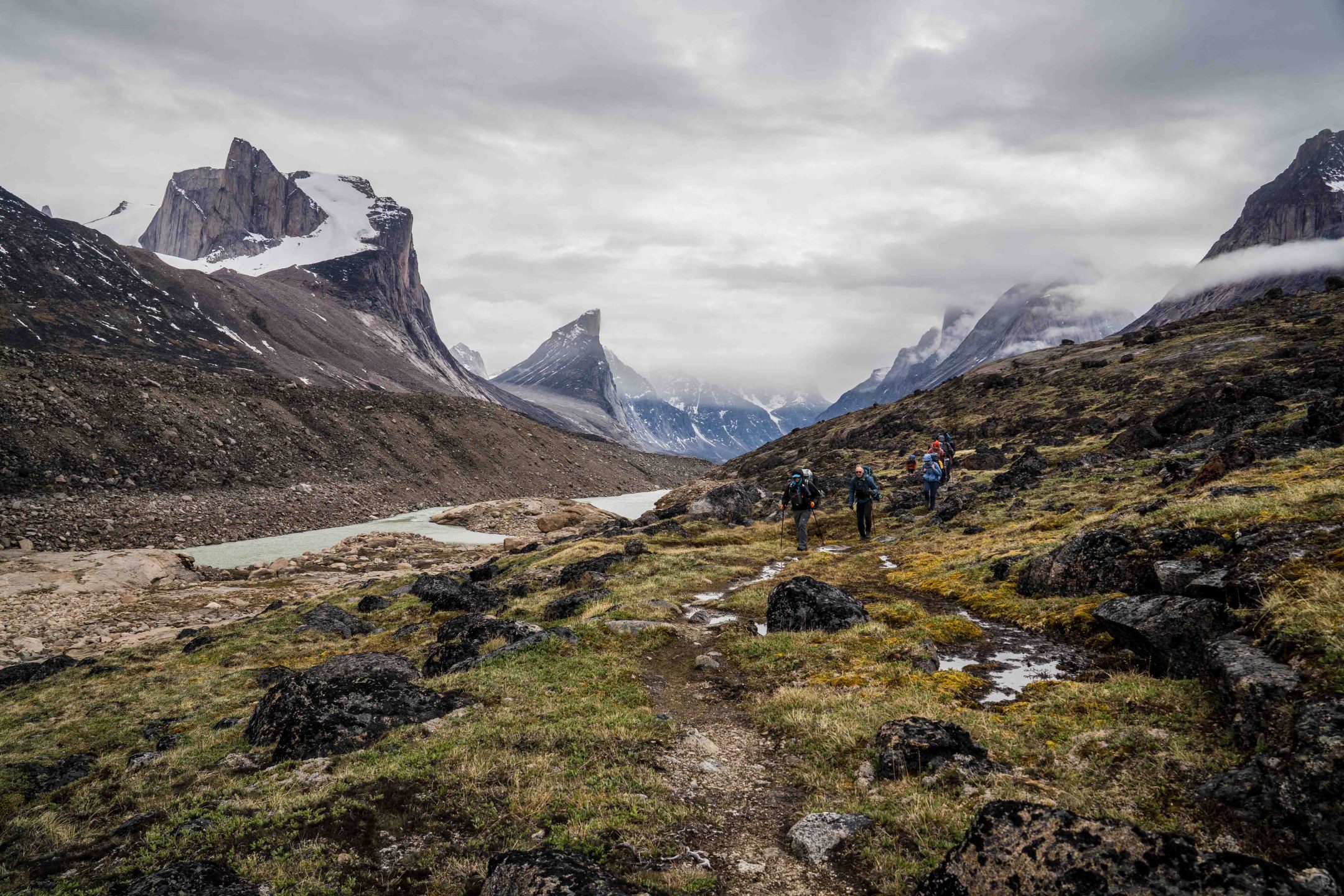There are no easy days in the Arctic. In the north, even the best-laid plans can be washed out, fogged in, or frozen over. But when the wind calms and the clouds eventually part, you get to witness something few people on Earth will ever see – a wild, otherworldly landscape that humbles and exhilarates in equal measure.
This past July, the Amarok Adventures team and a hearty crew of 10 travelers flew north for our first inaugural Baffin Island expedition. The goal: an 11-day backpacking traverse of the remote Akshayuk Pass Trail in the Auyuittuq National Park, carrying everything we needed for the journey on our backs, and relying on each other to move through one of the toughest and most beautiful hiking destinations on the planet.
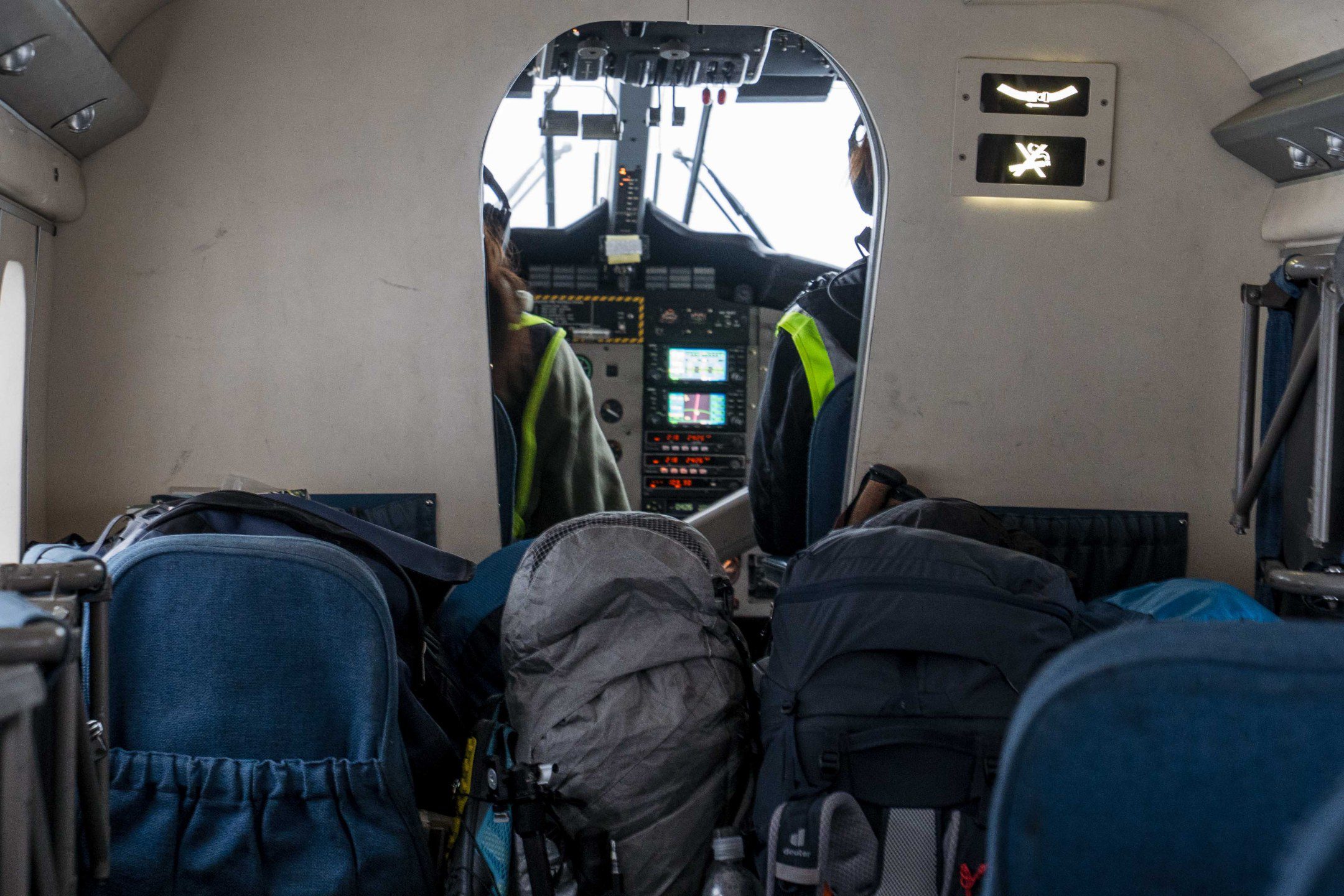
Day 1: Welcome to Baffin Island, the Gateway to Auyuittuq National Park
Baffin Island, located in the territory of Nunavut in the Canadian Arctic, is the fifth largest island in the world. It’s a land of jagged peaks, sprawling glaciers, and deep fjords, known for its raw, untamed beauty and the iconic granite spires of Auyuittuq National Park.
The trip began in Iqaluit, where our crew met for the first time at the hotel for a welcome briefing about the journey ahead. Our guides laid out a spread of dehydrated meals, snacks, and supplies, and we started prepping our packs for what we thought would be an early flight the next morning to Qikiqtarjuaq, the planned starting point of the trek.
That evening, we dined on caribou stew, our last heavy/hot meal before setting off into the Arctic wilderness. With full bellies and buzzing anticipation, everyone turned in for the night.

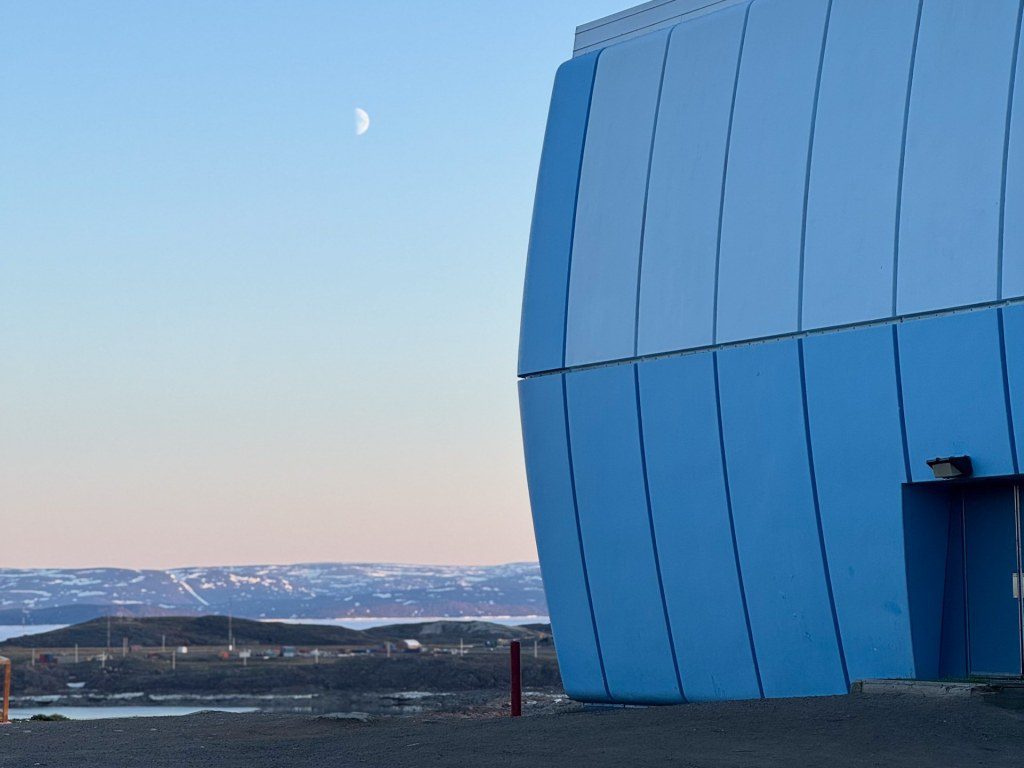
Day 2: On Route to Qikiqtarjuaq: When the Arctic says “Not Today”
What was meant to be a straightforward travel day turned into a masterclass in Arctic unpredictability. We woke early to head to the airport for a flight to Qikiqtarjuaq, with a brief stop in Pangnirtung. But as our plane was descending toward Pangnirtung for our brief stopover, low visibility forced the pilot to turn the aircraft around.
We were sent back to Iqaluit, grounded by the weather before our journey had even begun. The next available flight was not for another week! If we waited that long, we’d miss the expedition entirely.
With options fading fast, our guides locked themselves away, working on their phones and emails for hours. That night, while the guests hit up trivia night at the local Nunavut Brewery, Albert and Monica pulled off a miracle: they chartered a bush plane, two experienced pilots, and a new plan. We were going to get to Pang, but it would take two trips to ferry all of us and our gear.
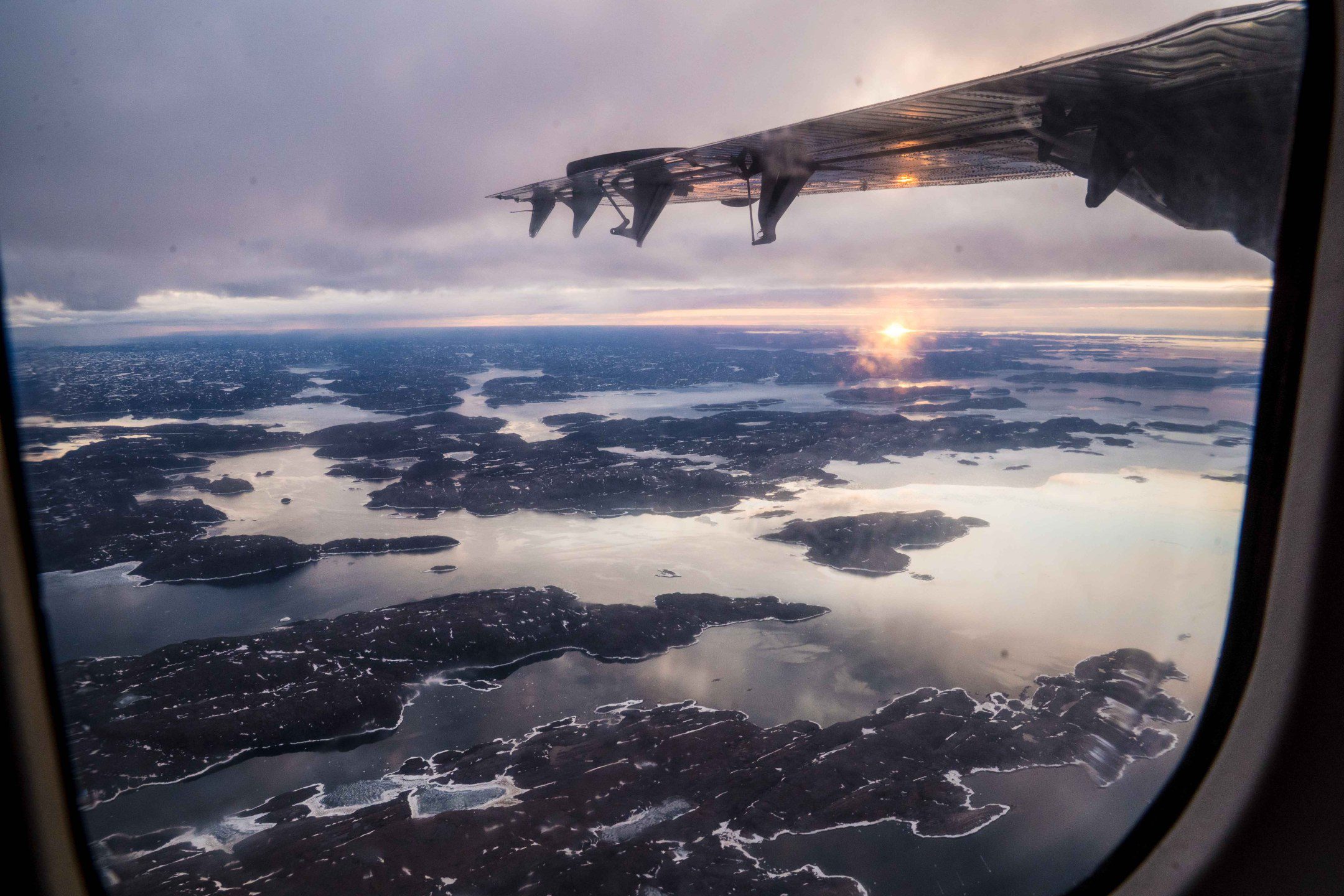
Day 3: Touchdown in Pangnirtung
To get to Pang, we had to split the group into two charter flights as the plane was small to carry everyone and their packs.
The first group touched down in Pang around 5PM. The second group arrived closer to 10PM. Tired but grateful, we regrouped, set up our camp, and shared dinner at a small local lodge, learning about Inuit traditions and the land we were about to walk through over the course of the next 7 days.
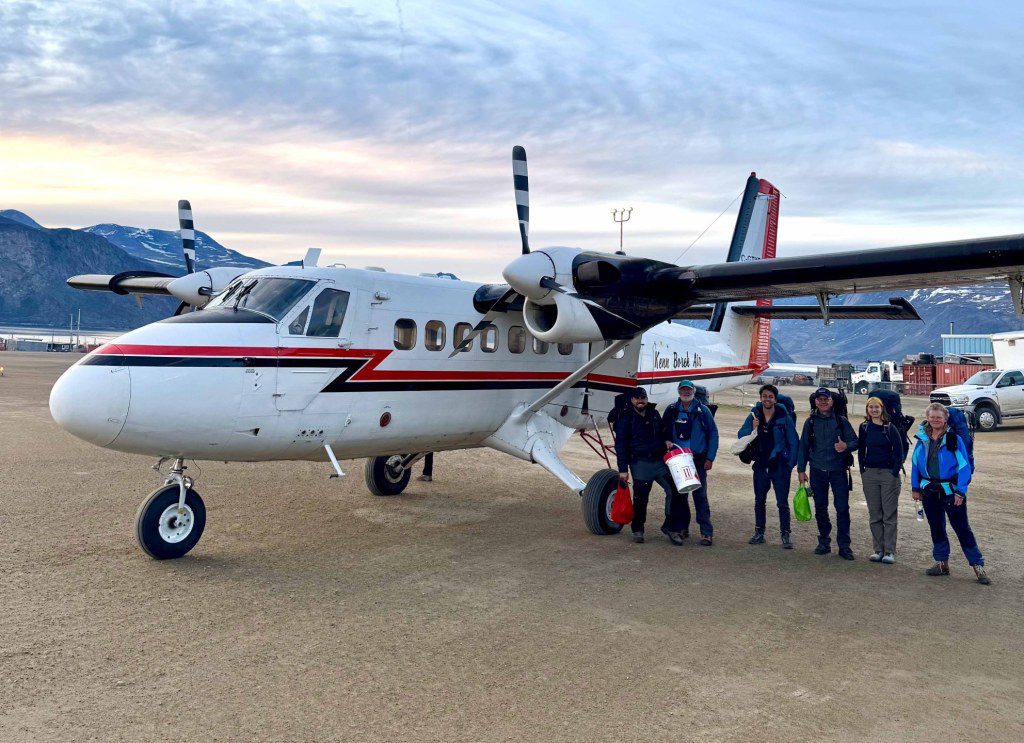
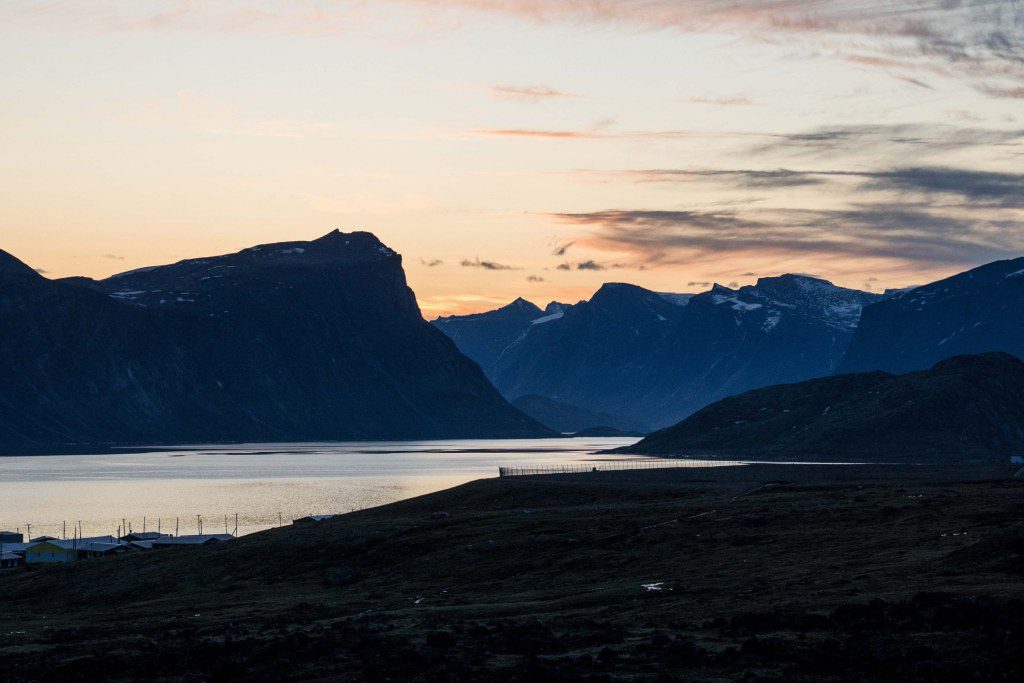
Day 4: Entering the Auyuittuq National Park
Peter’s boat tore across the fjord, dropping us near the Ulu Emergency Shelter on a rocky shore, only accessible thanks to the boat’s reinforced aluminum hull. From here, the hiking portion of our journey finally began.
We were already a day behind, so we pushed hard to cover some ground for the day. It was immediately clear that this Arctic landscape gives nothing away with ease. There are no marked trails, just wind, rock, and endless raw terrain. Even short distances demanded more time and energy than expected, with our 30-45-pound packs and uneven ground making every step a challenge.
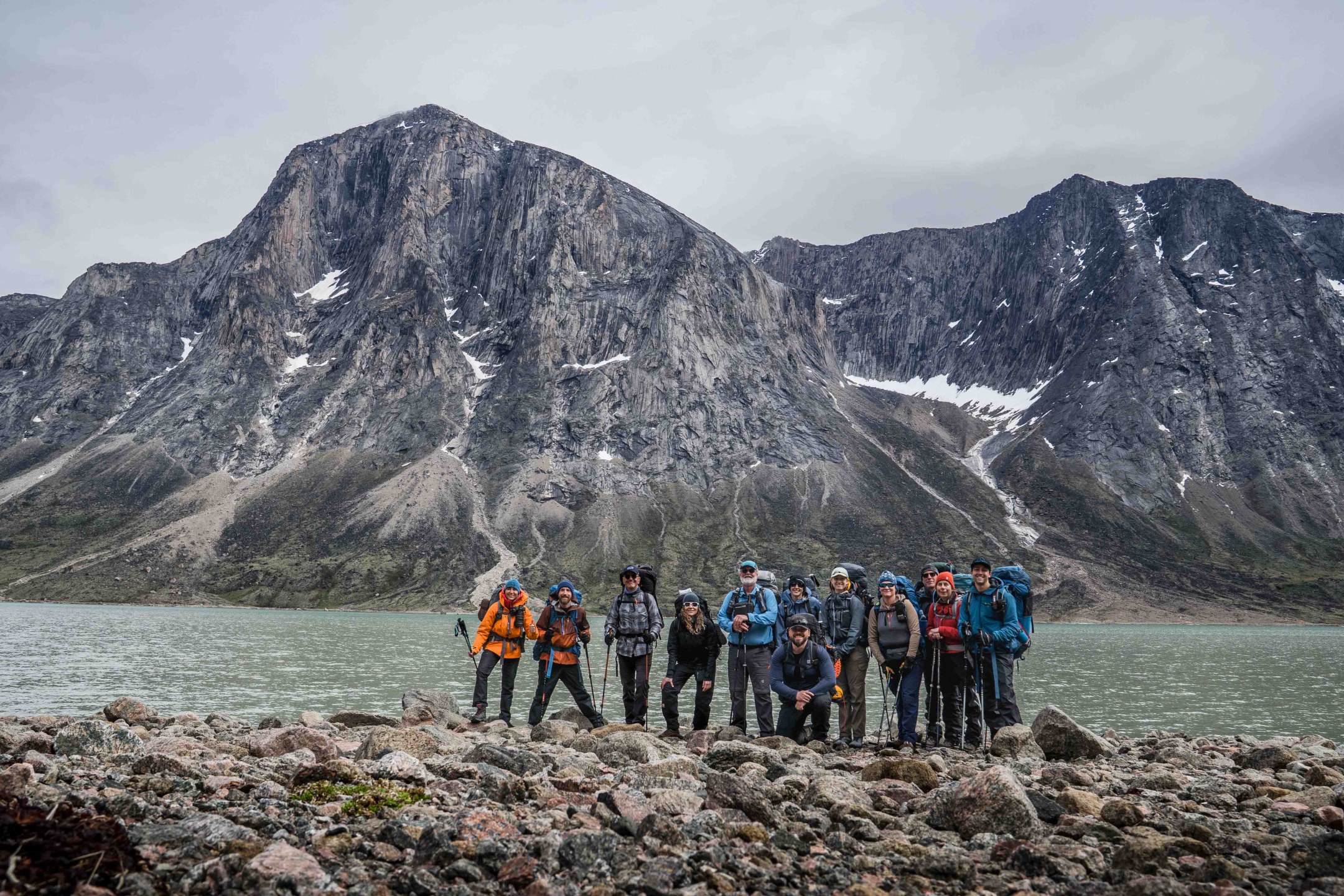
Our goal for the day was to reach Crater Lake. Sitting just below the Arctic Circle, this glacial meltwater lake is known for its striking turquoise hue, set beneath a hanging glacier draped over a sheer granite wall. It was a striking reward for the day’s effort.
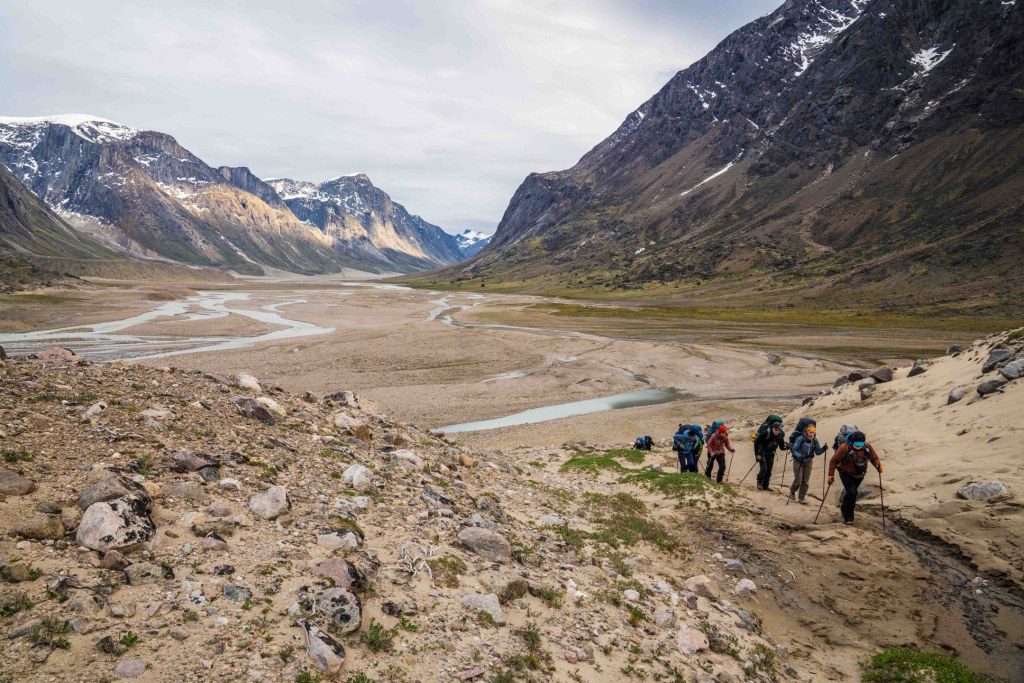
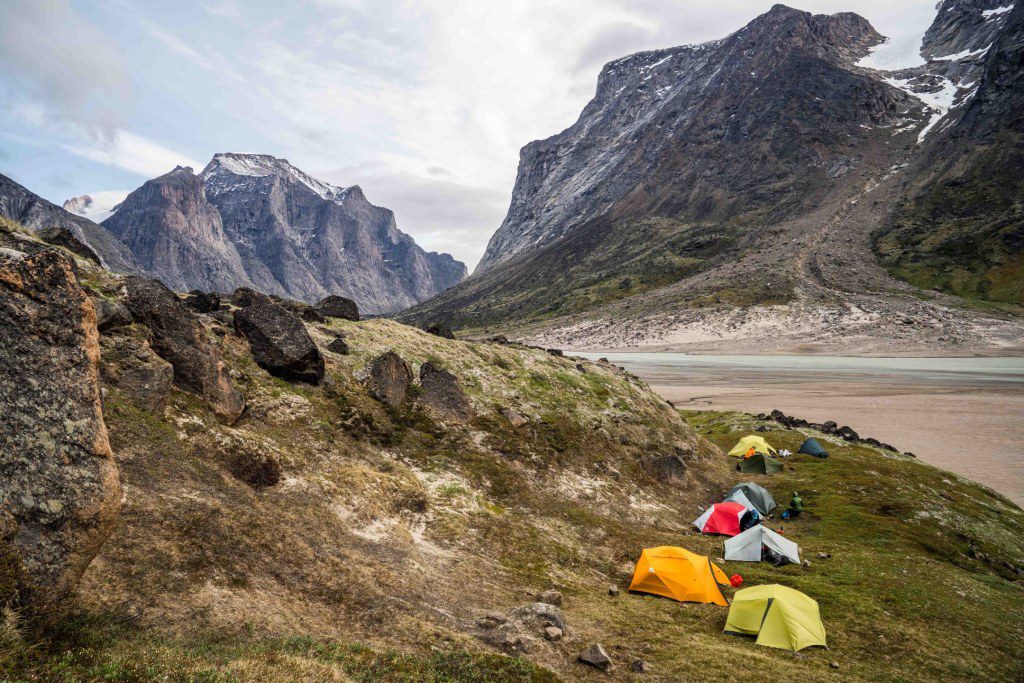
Day 5: Mount Thor
From our camp near the Weasel River, we set out toward the Thor Emergency Shelter. The day’s route took us past the Schwartzenbach Falls, where low water levels made for easy river crossings. We skirted the shores of Windy Lake, which lived up to its name with fierce gale‑force winds and blowing sand. Somewhere along the way, we stepped across the Arctic Circle (66°33′47.2″ N) on foot for the first time—a quiet marker of our entry into the Arctic, where summer days can stretch toward midnight and winter nights can last for weeks.
As we gained elevation, the first glaciers began to reveal themselves above the surrounding peaks. We crossed Half Hour Creek without difficulty, and after nearly 12 hours on the trail, we finally stood at the base of Mount Thor—its sheer rock face piercing the skies above us. This was our home for the night, sheltered near the Thor Emergency Shelter, with the sound of wind and rushing water lulling us off to sleep.
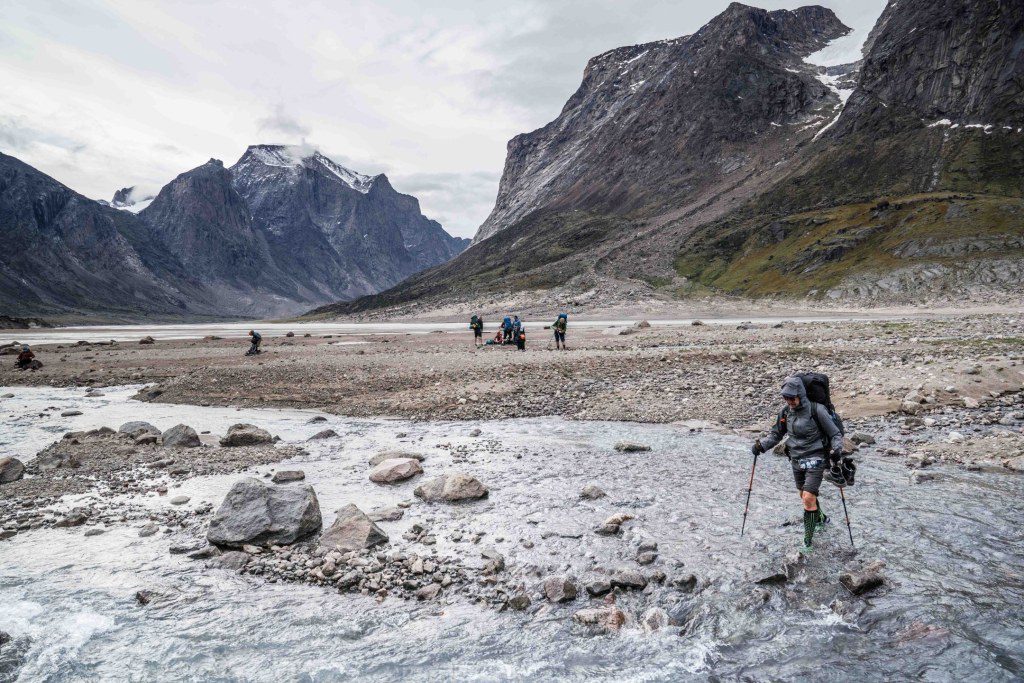
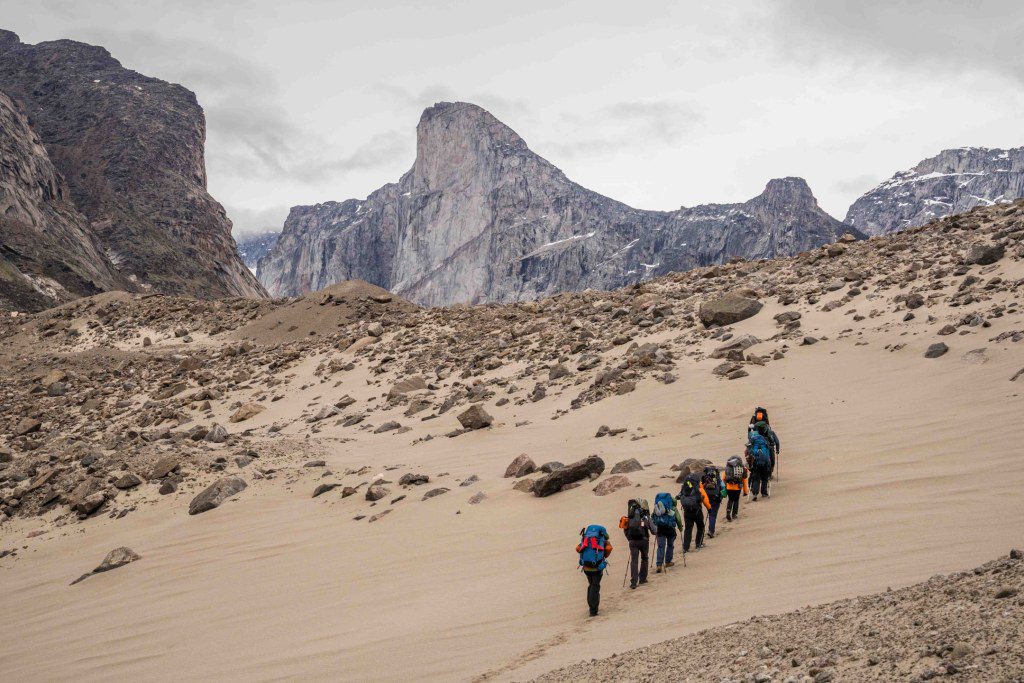
Day 6: Summit Lake: Wildlife Tracks and Arctic Silence
We continued from Thor to the Summit Lake Emergency Shelter. Along the way we spotted our first lemmings, plenty of caribou antlers, and tracks from Arctic wolves and foxes. These signs of life were a reminder that even in this stark, glacial valley, the Arctic is full of quiet, resilient wildlife activity.
We arrived at our sheltered campsite for the evening with epic views of Mount Thor and Mount Breidablik, ending the day with dinner outside under a calm, glowing Arctic sky.
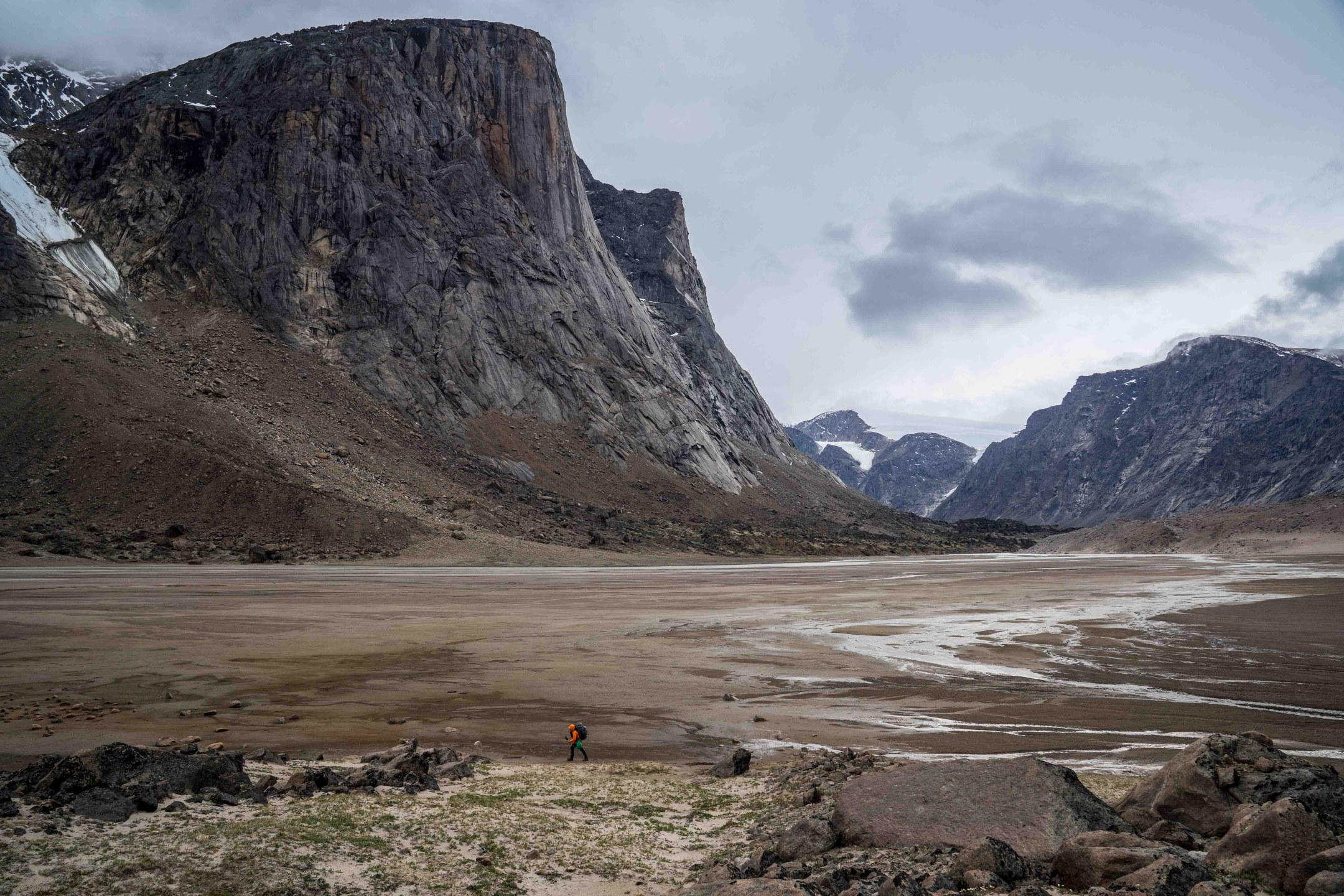
Day 7: Glacier Lake and a Turn of Events
The route to Glacier Lake carried us across a vast expanse of jumbled boulders, with each step demanding focus and strength. Jagged mountains crowding the horizon, their dark silhouettes cut against a pale Arctic sky, and the unmarked tundra stretching in every direction. When we reached the moraine at Glacier Lake, we hoped for our first glimpse of the legendary plateau peak of Mount Asgard, but low clouds clung stubbornly to its summit, hiding the famous spire from our view.
On the descent back toward Summit Lake, one group member twisted her knee while navigating a boulder zone. She handled it like a champ, finishing the hike to camp. But by the time we arrived, the pain had intensified, and it became clear we might need to end her trek. We contacted Parks Canada to discuss options as a group and initiate a potential evacuation.
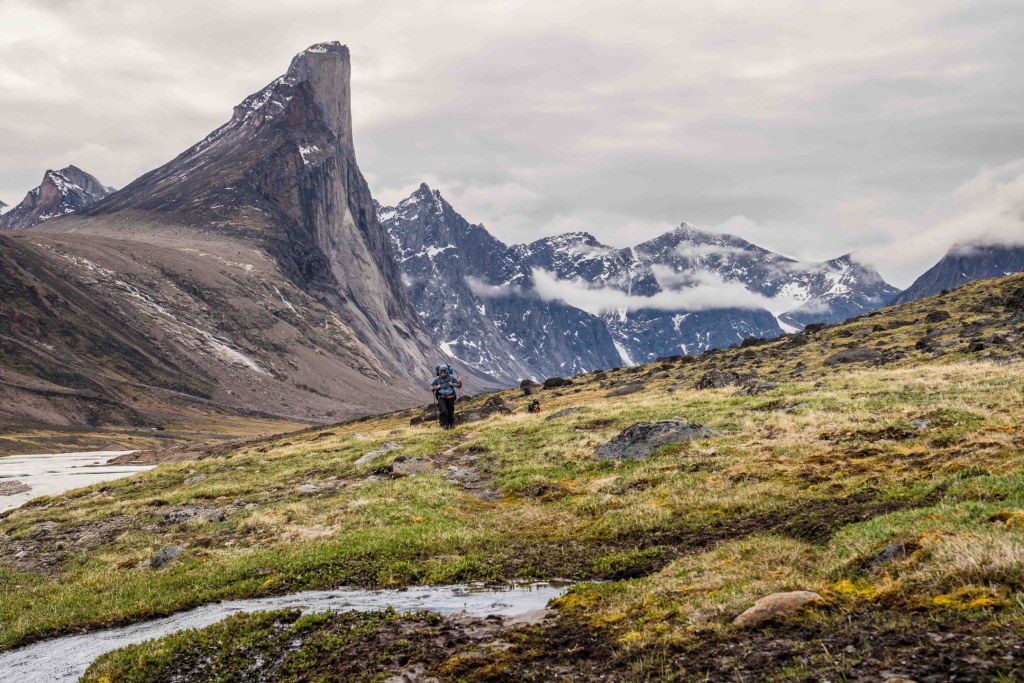
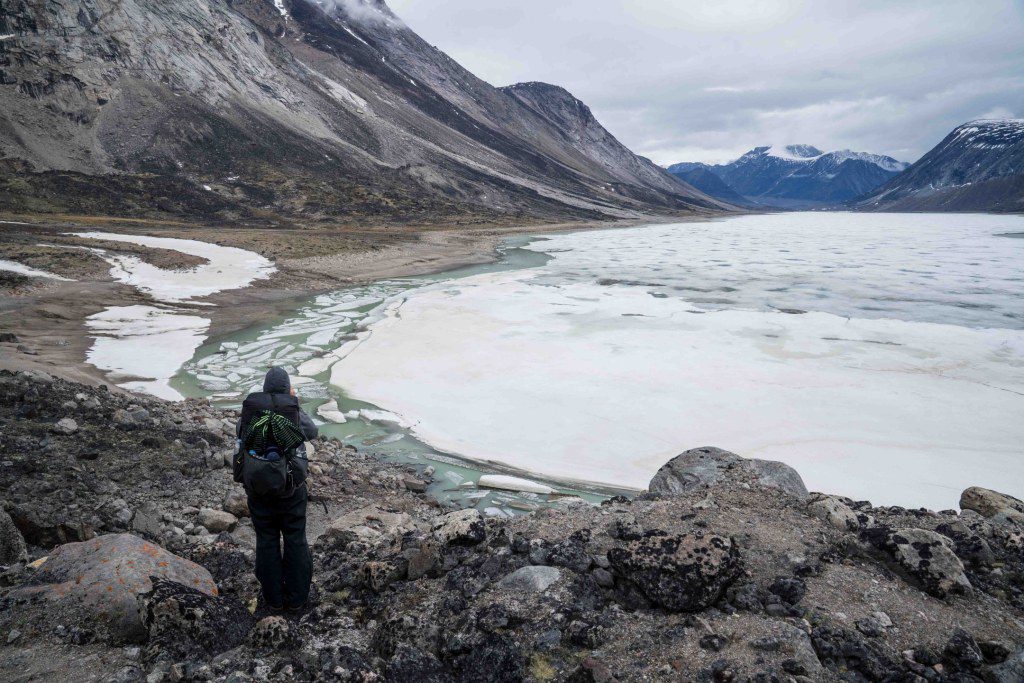
Day 8: Emergency Rescue and Resolve
By morning, her injury had worsened, and walking long distances with a heavy pack was not an option. With coordination between our guides and Parks Canada, we arranged a helicopter rescue. In Nunavut, there’s no dedicated SAR aircraft and they often come from mainland Canada. But luck was on our side! A small helicopter in Iqaluit was available, and only a few hours away. The SAR crew’s arrival was seamless, their professionalism matched only by the compassion they showed as we said our tearful goodbyes to the injured guest, promising to reunite at the journey’s end.
Once the rescue was complete, we began our trek back toward the Thor Emergency Shelter. The evening light poured over the valley in long, golden beams, turning the peaks into a pastel panorama. Energized by the surreal beauty, we pulled out our cameras and started filming a playful, Wes Anderson–inspired short.
That night, we celebrated Nunavut Day facing Mount Thor, the air crisp and clear, the sense of camaraderie stronger than ever.
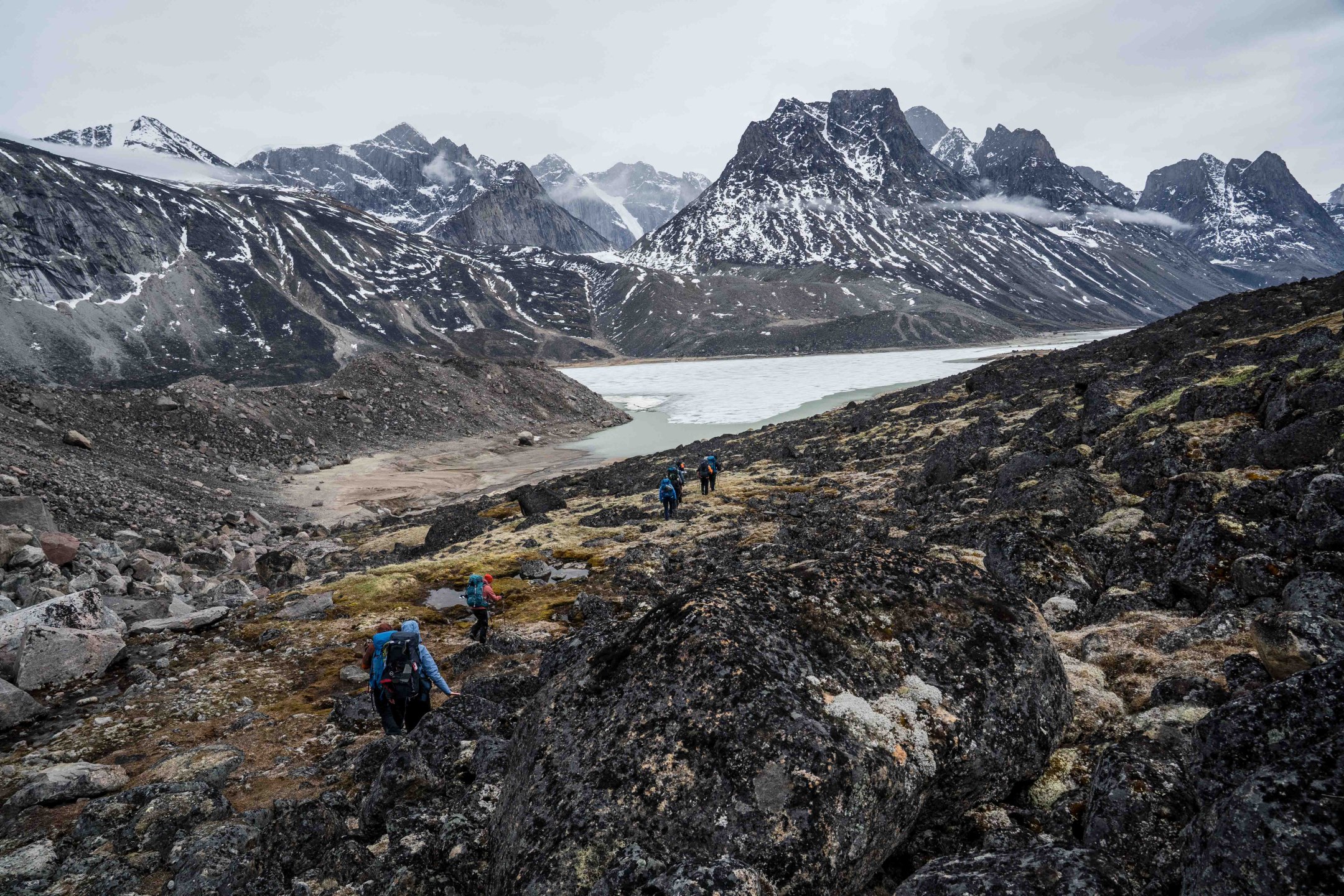
Day 9: Rivers and Rain
We had planned to hike from Thor to Crater Lake, but the rain finally caught up with us. Under a low, brooding sky, the landscape took on the dark, dramatic tones of Mordor. We passed the remnants of the suspension bridge destroyed back in 2008, a stark reminder of how the rivers in the Auyuittuq National Park can rise to dangerous levels.
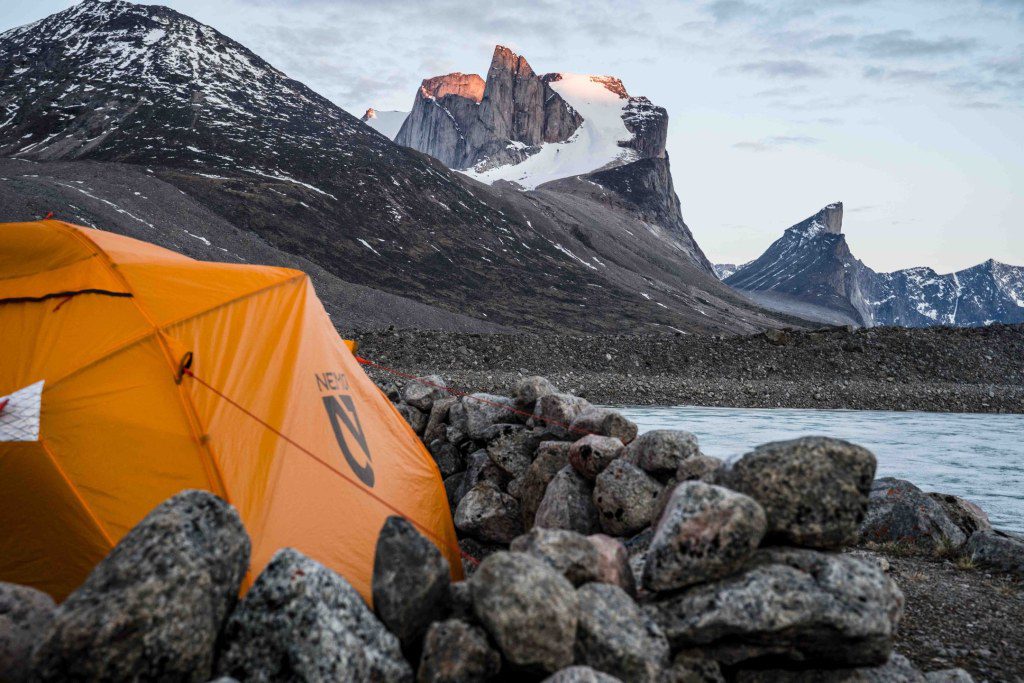
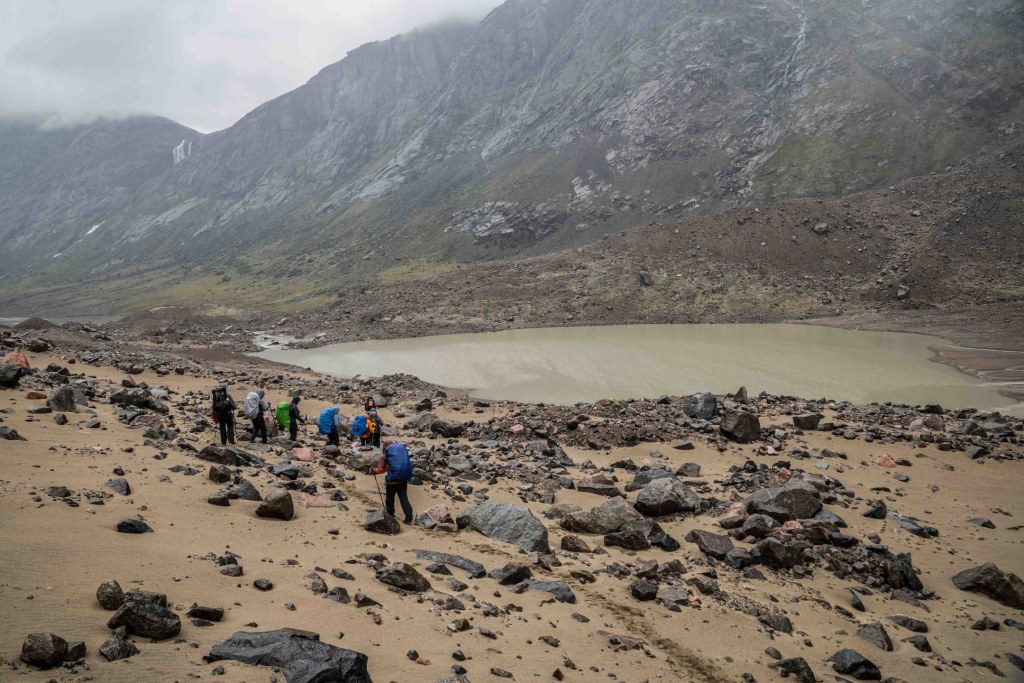
By the time we reached the river coming from Schwartzenbach Falls (Qulitasaniakvik), the water was already running high and fast. Crossing was out of the question. We set up camp around 5:30PM, knowing we’d have to try again in the early hours, alarms set for 2:30AM.
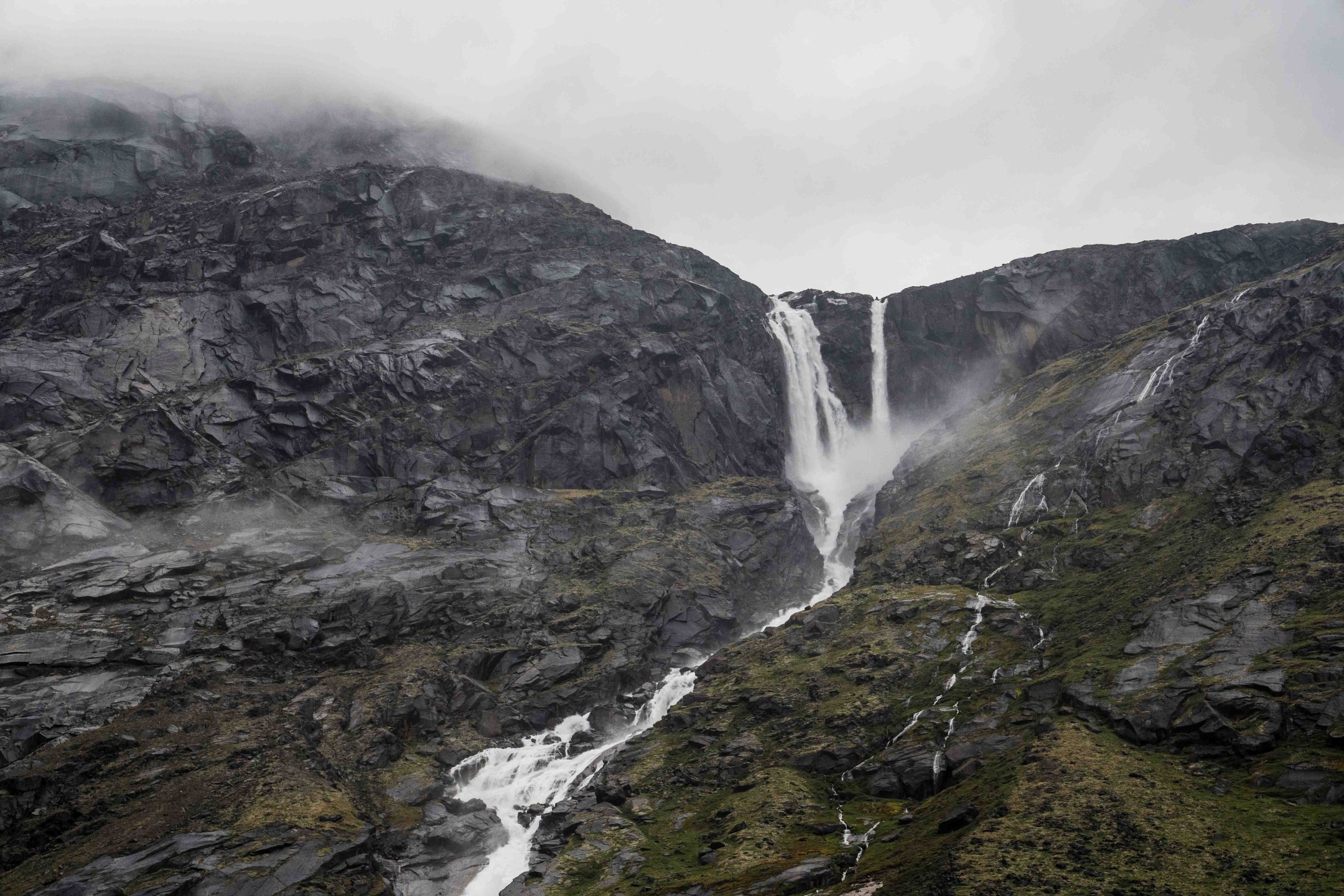
Day 10: The Long Hike Out
The early wake-up paid off, but just barely. By dawn, the rivers were swollen and running fast with brown sediment water. Our largest river crossing required all ten of us in the group to link in a human chain just to stay upright against the current. From beginning to end, the last day of the hike became a gauntlet — multiple braided rivers to cross, the tundra was now sodden and spongy, beaches turned to quicksand, and unstable ground fractured by new crevasses.
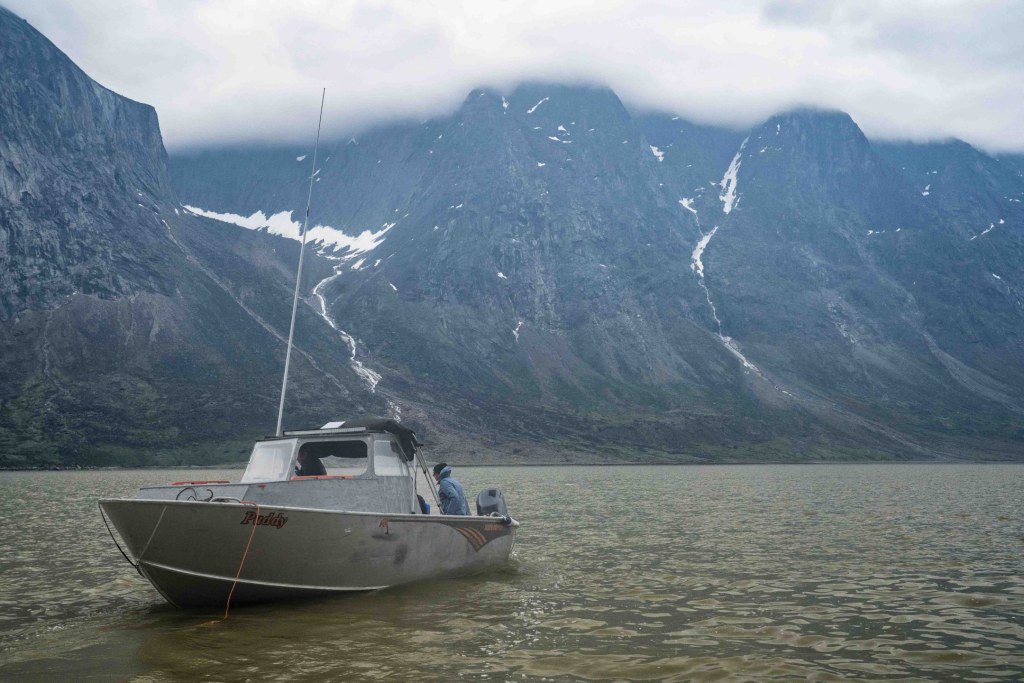
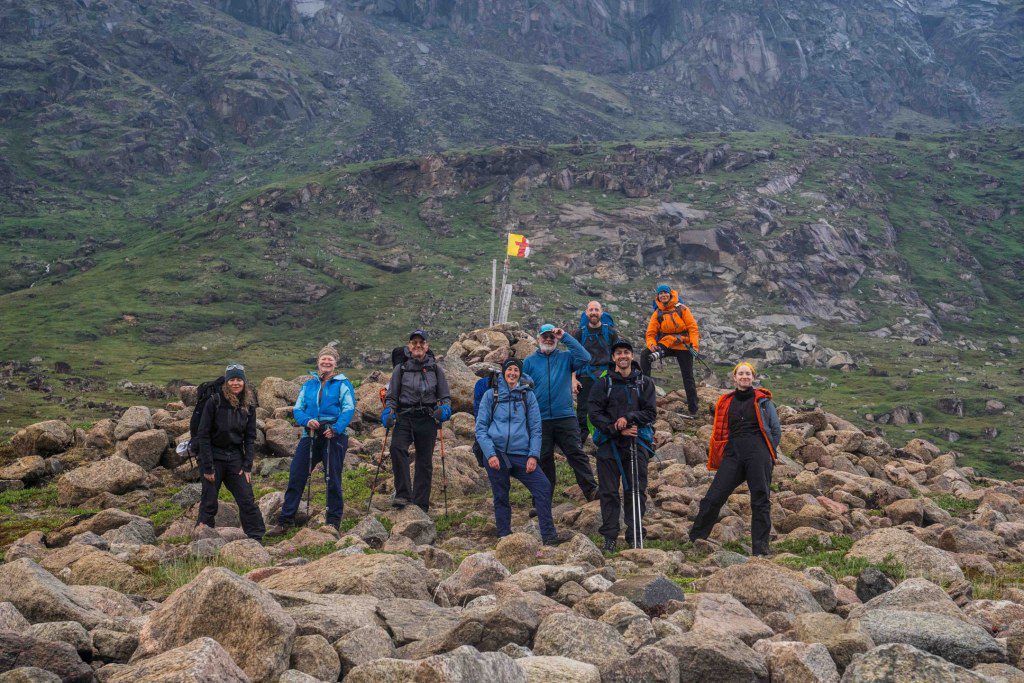
After hours of steady effort, we finally reached the Ulu Emergency Shelter for lunch. The final 4km to our pickup was a test of tired legs and focus, but soon Peter’s speedboat appeared in the shallows. Climbing aboard, we left the Auyuittuq National Park behind, the fjord opening ahead as the peaks slowly gave way to the approach to Pangnirtung.
On arrival in Pang, we reunited with our rescued teammate and ended the expedition with hot showers, shared stories, and one last night in Nunavut.
Day 11: Final Reflections and Baffin Island Departure
The next morning, we flew to Iqaluit, collected our gear, and said our final farewells to the group. Faces that had once been strangers now felt like family. We shared laughter in the rain, silence under endless sky, and the steady rhythm of boots on tundra. This journey was challenging from start to finish, pushing each of us to our limits, yet giving back far more than it ever took.
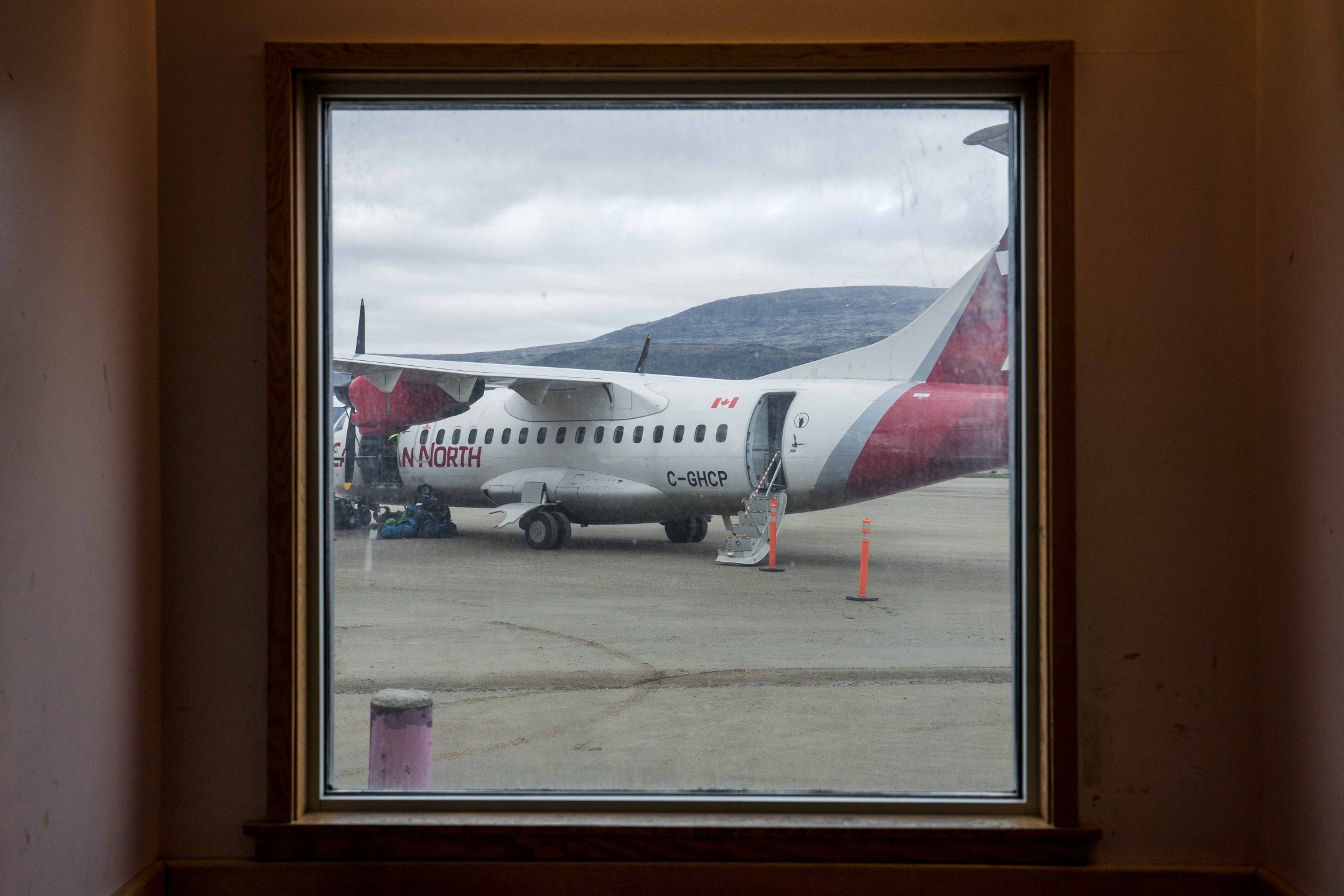
The Arctic always leaves its mark. It strips away everything unnecessary until all that remains is what matters most: grit, trust, self-discovery, and the rewarding lessons from a place that never compromises.
The memories of this place will stay with us long after we’ve gone.
Plan your visit – Akshayuk Pass Trail, Baffin Island
Thinking about joining us in 2026? This expedition fills fast. Learn more and join the interest list here.
This journey isn’t for everyone. But for those ready to embrace true remoteness of the Canadian Arctic, Baffin Island offers an adventure as wild as it is humbling.
